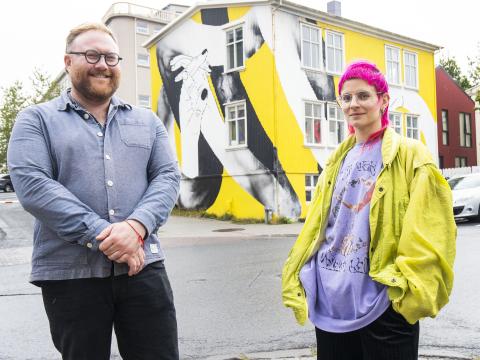
Street art is thriving in Reykjavík like never before. New works constantly appear. We have mapped over 160 street artworks to make them easier to find and enjoy.
Street art has a long history. Modern Reykjavík is rich with beautiful street artworks. These diverse and exciting artworks surround us. Some are prominent while others hide in unexpected places, secret gems that brighten our everyday lives. Street art in the city has been mapped for some time. There are now over 160 works on the map. The map includes outdoor street artworks within Reykjavík city limits. The list is not exhaustive. The map is constantly updated as the street art landscape changes, with works disappearing and new ones appearing.
Adam Flint Taylor and Natka Klimowicz have thought a lot about street art and know it well. Natka is a visual artist who designs posters for cultural events and social causes. She has also created street art, including in Reykjavík. Adam is the program director of graphic design at the Iceland Academy of the Arts. He has been involved in many exhibitions and projects related to public art. They agree that street art in Reykjavík is flourishing. "The scene is very active," says Natka. "Often it's the same people or groups behind the works, but we also get visitors who create works here."
"The works can actually change the neighborhood spirit and create a new atmosphere"
Accessible and free but not meant to last forever
Street art in public spaces has a certain uniqueness. "This art is accessible to everyone and free," says Adam. "You don't have to pay to enjoy street art. I think this is important, that people have the opportunity to experience art that doesn't cost money."
"This is art we enjoy in daily life. It becomes part of the city's landscape and part of our own personal landscape because we see it every day when we're out and about," says Natka. "Another special thing about these artworks is that they have an unknown lifespan. You paint the work but don't know when it will be painted over, damaged, or the building demolished, for example. It's never meant to last forever."
Adam agrees and adds: "Snow can even cover the work for a while, rain can destroy the paint, and so on."
Artists who create street art have also mentioned as an advantage that the works are not taken down at a specific time, as is common with works hung in art museums or galleries. Some street artworks even live on from generation to generation, like the work "Flatus lifir” (Flatus lives), which stands at the roots of Mount Esja and has been renewed with new generations of artists.

The work "Flatus lifir" is prominent when driving on Vesturlandsvegur at the roots of Mount Esja. Edda Karólína Ævarsdóttir owns this work.
They say that with street art, artists also have the opportunity to influence the environment of the works and even convey messages. Adam mentions as an example a work that Natka did in collaboration with Amnesty International on the building of Kaffihús Vesturbæjar.
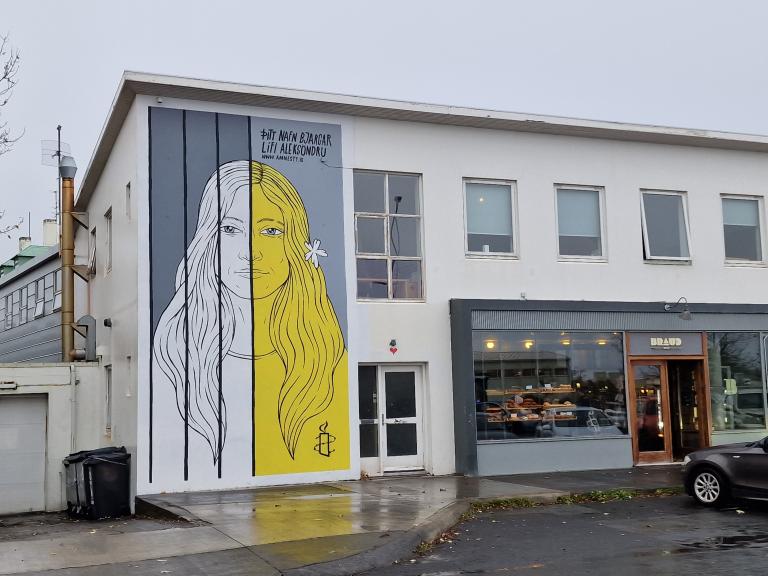
The work Natka did with Amnesty at Kaffihús Vesturbæjar.
"Works can change our experience of the environment. If a work is about asylum seekers, for example, its environment gets a certain power, and if I myself am an asylum seeker, I can experience a feeling of safety near this particular artwork. The works can actually change the neighborhood spirit and create a new atmosphere," says Adam.
Fun to see something new and exciting being created
Some find the line between street art and graffiti or vandalism sometimes unclear. Natka says that the more accessible the art is, the more people appreciate it. She says it's rare for people to confuse these, and she herself has only met goodwill and positivity when creating street art. "My experience of painting in downtown Reykjavík is fantastic, for example. Wonderful people even stopped by every day to see how it was going because people enjoy seeing the works being born, seeing something new and exciting being created. You see behind the scenes while the artist is doing their work," she says and mentions as an example of the goodwill she has encountered that when she created a work near Vitabar, she received food from the place every day. "I've received very positive reactions, but I know some of my friends have experienced different reactions, and of course, that will always happen. You can never please everyone, but in general, I think street art brings joy and pleasure to people."
Natka and Adam have considered whether and how to categorize the city's street artworks according to their different content. The conclusion is that many of the works can be categorized according to whether they are created for locals to enjoy, or whether they are more intended to appeal to those traveling to Iceland. "By that, we mean that some works have some kind of marketing appeal, are not necessarily advertisements, but are intended to enhance visitors' image of what and how Iceland is, rather than the works having a real connection to Icelandic history or culture," says Natka. "The emphasis on preserving the Icelandic language is great, but I feel like less emphasis is placed on preserving Icelandic cultural and artistic tradition. I would like to see more works focusing on what is already here, I think this is important because art tells us the history of the place."
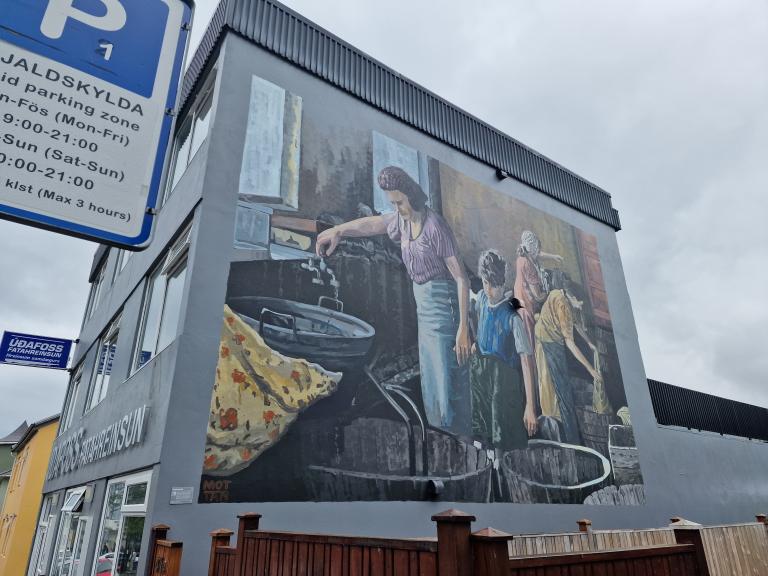
They mention Stefán Óli's (Mottan) work on Vitastígur as an example of an interesting work with a direct connection to Icelandic history. It's the work "Þvottahúsið" which shows washerwomen who walked to the hot springs in Laugardalur to do laundry. The work is based on an old photograph, in collaboration with the Museum of Photography.
Many favorite works
Asked about their favorite works in the city, they don't hesitate to answer. "I lived on Bergþórugata, right across from a work that Natka did with Krot og Krass on the Andrými house," says Adam. "That work is a favorite of mine because Andrými is a place where everyone is welcome, and the work, which shows hands intertwining, embraces the people inside the house." The work can be seen at the top of this article.
Adam also mentions a work by Arnar Ásgeirsson, at Óðinstorg. "The work is beautiful and helps frame this nice outdoor gathering area. At the same time, it could just as well be a beautiful work in someone's living room," he says, and they agree that the work also has a certain reference to Icelandic art of past centuries.
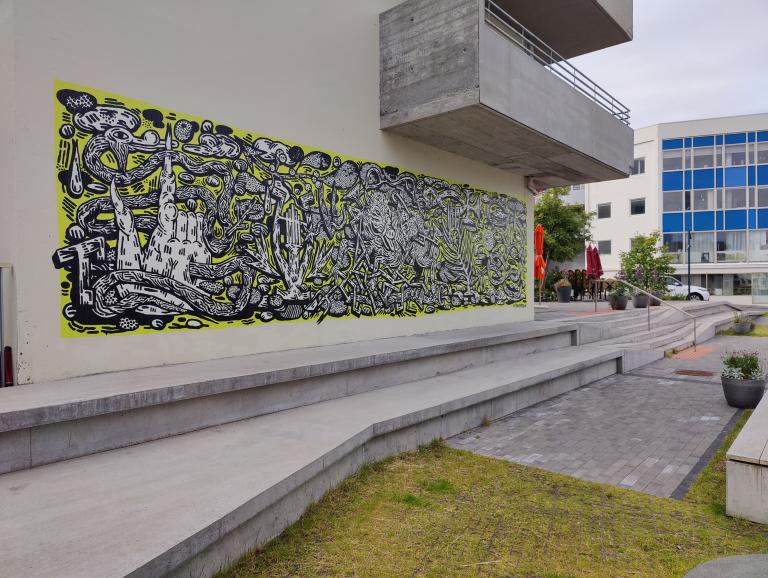
Arnar Ásgeirsson's work at Óðinstorg.
Natka says she likes a work by Narfi at Veghúsastígur and another that stands at Bjargarstígur, by Dabsmyla & Kems.
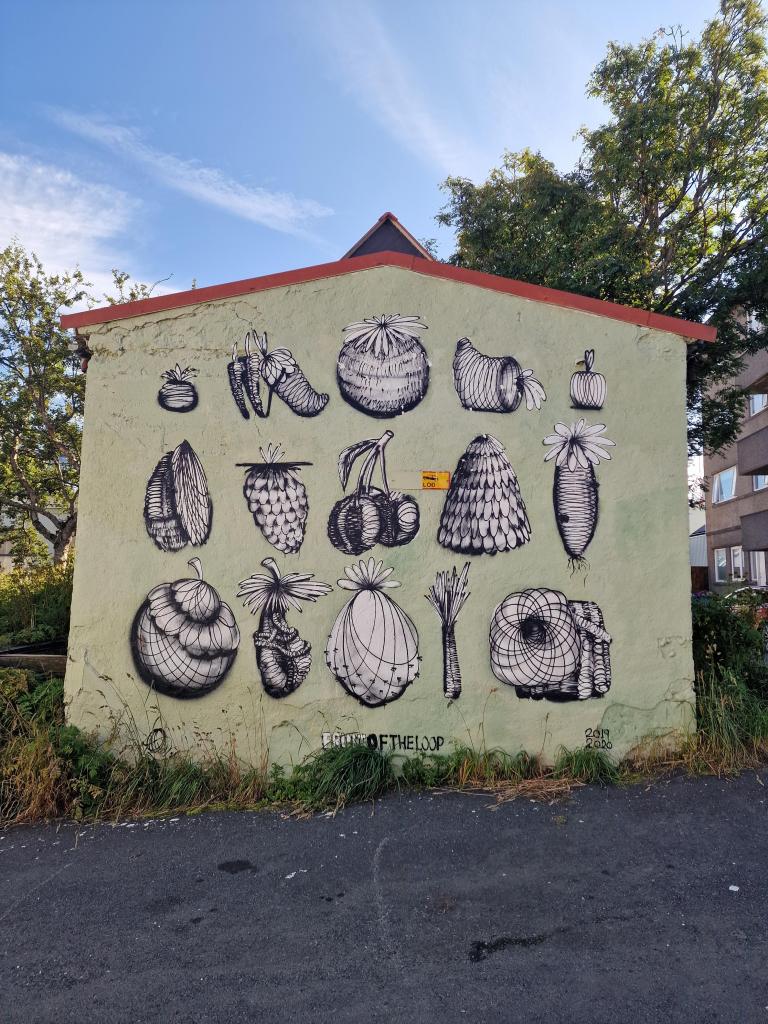
Qwick's (Narfi's) work at Veghúsastígur.
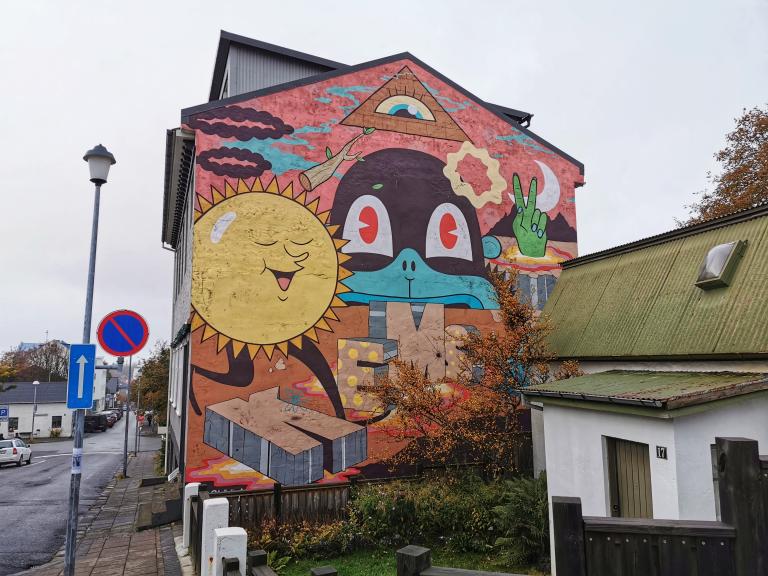
Dabsmyla and Kems' work at Bjargarstígur.
"Many interesting works also make good use of their surroundings or the architecture around them," says Adam and mentions as an example Sara Riel's work on Njálsgata, where an opening in the wall is used as the starting point for the artwork.
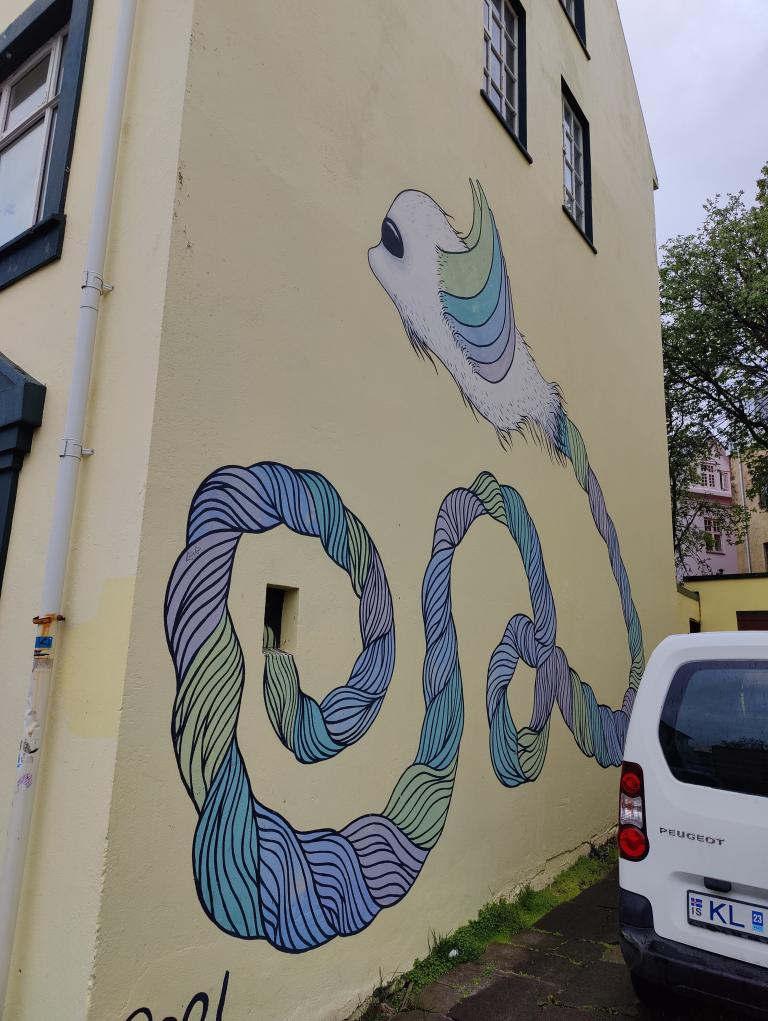
Sara Riel's work on Njálsgata.
Natka then mentions a large work of birds at Sundahöfn, by Arnór Kári and Stefán Óli (Mottan), which has been discussed here before. "That work interacts so nicely with its surroundings. The work is colorful and delicate but is located in the middle of an industrial area, I find these interesting contrasts."
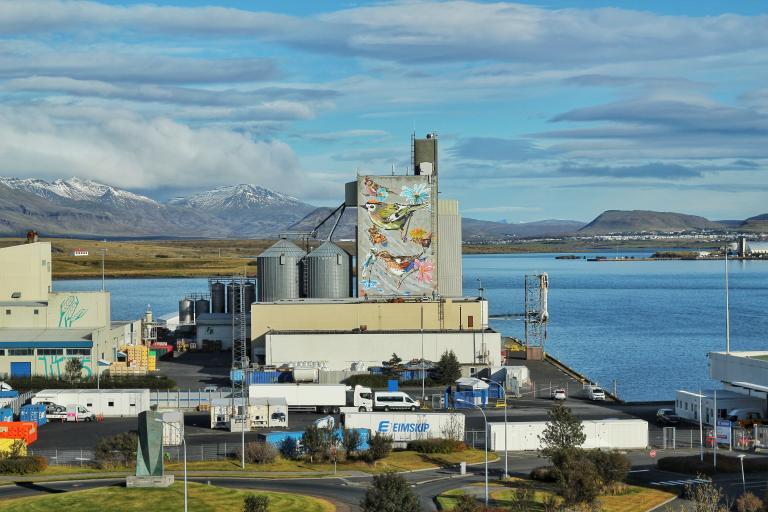
Arnór Kári and Stefán Óli's huge work at Sundahöfn.
Finally, they mention interesting works located in Hamraborg, as it's worth noting that there has been growth in street art in Kópavogur.
"You can never please everyone, but in general, I think street art brings joy and pleasure to people"
Wants to see street art in all neighborhoods
Adam finally points out that Reykjavík has historically featured very colorful buildings, for example, brightly colored houses with another strong color on the roof. "In some areas there are many works but in other neighborhoods almost none, and I would like to see diverse street art in the spirit of the city's colorful history, in all neighborhoods. We should encourage this art form and create more opportunities for people to see art that they don't have to pay for."
As mentioned before, the street art map is updated regularly as new artworks constantly appear in the city and others disappear. Suggestions are welcome at the email address mailto:veggjalist@gmail.com.